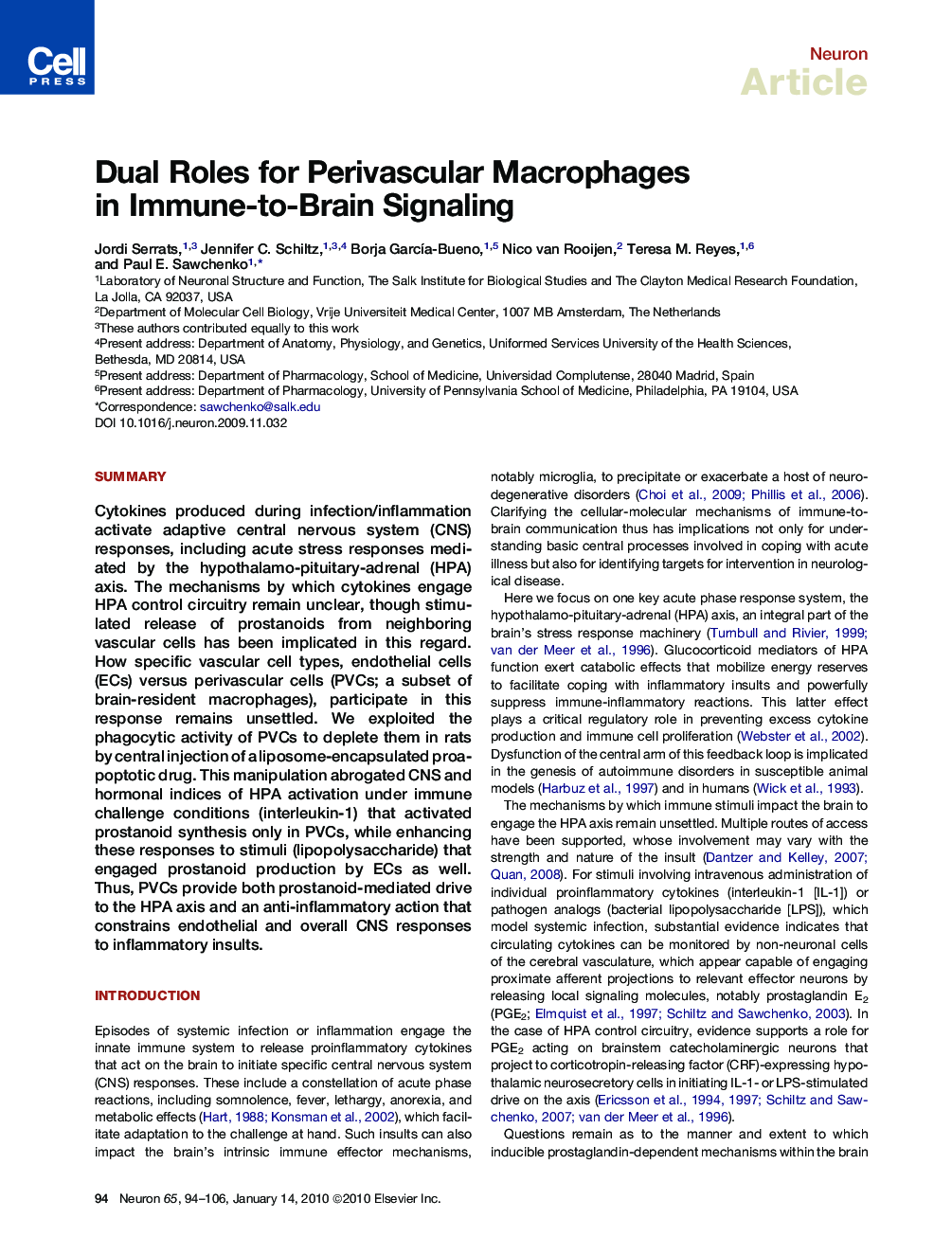| Article ID | Journal | Published Year | Pages | File Type |
|---|---|---|---|---|
| 4321648 | Neuron | 2010 | 13 Pages |
SummaryCytokines produced during infection/inflammation activate adaptive central nervous system (CNS) responses, including acute stress responses mediated by the hypothalamo-pituitary-adrenal (HPA) axis. The mechanisms by which cytokines engage HPA control circuitry remain unclear, though stimulated release of prostanoids from neighboring vascular cells has been implicated in this regard. How specific vascular cell types, endothelial cells (ECs) versus perivascular cells (PVCs; a subset of brain-resident macrophages), participate in this response remains unsettled. We exploited the phagocytic activity of PVCs to deplete them in rats by central injection of a liposome-encapsulated proapoptotic drug. This manipulation abrogated CNS and hormonal indices of HPA activation under immune challenge conditions (interleukin-1) that activated prostanoid synthesis only in PVCs, while enhancing these responses to stimuli (lipopolysaccharide) that engaged prostanoid production by ECs as well. Thus, PVCs provide both prostanoid-mediated drive to the HPA axis and an anti-inflammatory action that constrains endothelial and overall CNS responses to inflammatory insults.
► Depletion of PVC macrophages eliminates IL-1-induced prostanoid production ► Loss of prostanoid production reduces HPA axis responses to IL-1 immune challenge ► PVC ablation enhances endothelial prostanoid production and HPA responses to LPS ► Febrile, but not locomotor, responses to IL-1/LPS are modulated by PVC ablation
